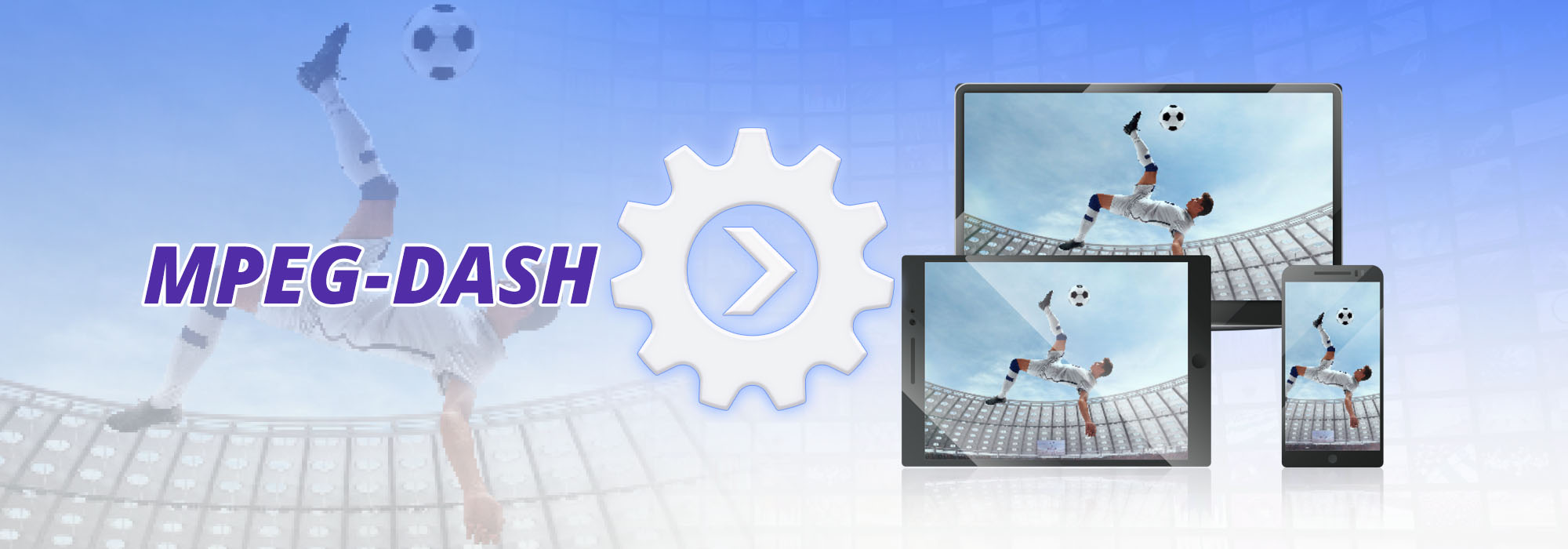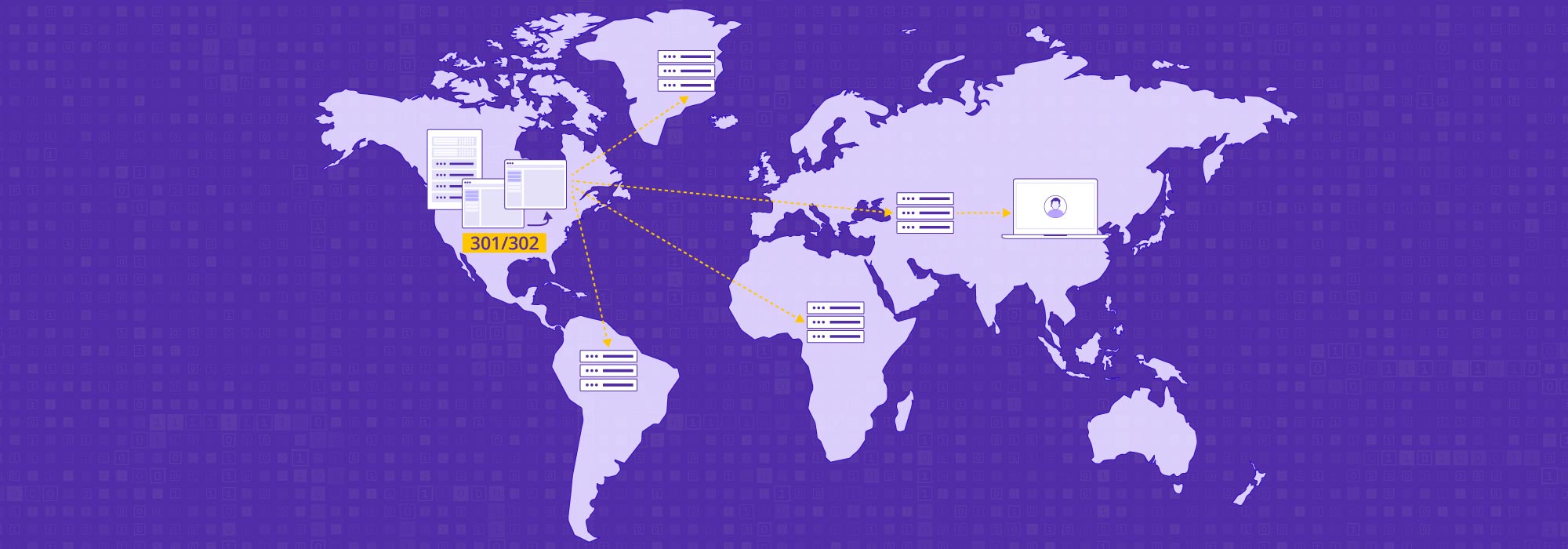Video streaming has almost become the go-to means of entertainment today. More audiences around the globe are tuning into high-quality video based content as well as audio entertainment. This trend is only expected to continue, with Statista reporting that the number of users streaming video could reach 1.64 billion by 2027. The global user penetration, currently at 16.9% in 2023 is also expected to hit 20.6% by 2027.
This also means delivering high-quality videos with good user experience will become more important than ever for content providers. And they will have to explore streaming technologies such as MPEG-DASH to stay on top of consumers’ minds.
What Is MPEG-DASH?
MPEG-DASH is a streaming method that is based on HTTP, a common protocol used for delivering data – video, audio or other content – over the internet. In fact, the DASH in MPEG-DASH stands for “Dynamic Adaptive Streaming over HTTP.”
Streaming using MPEG-DASH involves breaking down the file into chunks and encoding each for different quality levels. This very feature is what allows the streaming of videos where one can switch from one quality to another even as the video is playing.
A History of MPEG-DASH
Since streaming became a technologically feasible option, there have been various competing technologies adopted by providers. Some of the popular ones contenders included Adobe’s Real-Time Messaging Protocol (RTMP), Apple’s HTTP Live Streaming (HLS), and MPEG-DASH.
In the early 2000s, Adobe’s Real-Time Messaging Protocol (RTMP) was the dominant choice for video and audio data delivery. But the rise of HTML5-based technologies brought about a shift towards adaptive bitrate streaming, improving caching efficiency and reducing buffering issues. This transition led to the development of new proprietary protocols, such as Apple’s HLS.
As the streaming technologies developed and became more diverse, there was a need for a standardized adaptive streaming solution. And in 2012, the Moving Pictures Expert Group (MPEG) finalized the Dynamic Adaptive Streaming over HTTP (MPEG-DASH) standard, collaboratively developed by over 50 companies, including Microsoft, Netflix, and Apple. Designed as an alternative to HLS and other proprietary technologies, MPEG-DASH quickly gained traction as a robust and universally accepted streaming protocol. Today, MPEG-DASH and HLS stand as the two most common HTTP-based protocols.
What is HLS?
HTTP Live Streaming (HLS) is another streaming protocol developed by Apple. Since it uses the HTTP protocol which is supported by all internet connected devices, it has a wide reach. Initially developed for use on Apple products, it is now used across a broad range of devices. Similar to MPEG-DASH, HLS breaks down video files into smaller chunks of downloadable HTTP files before delivering them through the HTTP protocol. The end user loads these HTTP files and is able to play them back as the original video.
What Is Adaptive Bitrate Streaming?
Adaptive bitrate streaming is a critical advancement in video streaming technology, which has enabled the seamless adjustment of video quality during playback. It is responsible for ensuring a smooth viewing experience regardless of varying network bandwidth and is supported by various streaming protocols, such as MPEG-DASH, HLS, and HDS.
Adaptive bitrate streaming works by preparing video segments at multiple quality levels during the encoding and segmentation processes. This gives the player capability to dynamically switch between different quality levels while the video is playing, without any interruptions to the playback. So even if there is a sudden reduction in network bandwidth, the video continues to stream flawlessly even instead of resulting in buffering or complete stoppage of the video stream.
Benefits and Advantages of Using MPEG-DASH
- Adaptive Bitrate Streaming: Since it uses adaptive bitrate streaming, MPEG-DASH enables real-time adjustments in video quality during playback. This dynamic adaptation ensures uninterrupted streaming even in fluctuating network conditions, delivering a smooth and buffer-free viewing experience.
- Bandwidth Efficiency: Since it automatically adjusts the video quality based on the available network bandwidth, MPEG-DASH conserves resources during periods of limited connectivity and provides the highest possible quality during periods of ample bandwidth.
- Improved Viewer Retention: With reduced buffering and continuous playback, MPEG-DASH significantly improves viewer satisfaction and retention rates. By delivering a great streaming experience, content providers can keep audiences engaged for longer periods, fostering brand loyalty and encouraging return visits.
- Flexibility: Being an industry-standard streaming format, MPEG-DASH is widely adopted by major streaming platforms and content providers. This makes it highly compatible and interoperable across different streaming solutions.
- Codec Agnostic: MPEG-DASH supports various video and audio codecs, ensuring flexibility in content creation and delivery. This allows content providers to adopt the most suitable codec for their specific needs, ensuring compatibility with a broader range of devices.
How Does MPEG-DASH Work?
The way that MPEG-DASH works involves a series of well-defined steps.
- Encoding and Segmentation: The streaming process begins with the origin server dividing the video file into smaller segments, typically a few seconds in length. An index file, acting as a table of contents for the video segments, is also created. These video segments are then encoded to be interpreted by multiple devices.
- Delivery: After this, the streaming begins when users initiate playback. The encoded video segments are pushed out from the origin server to client devices over the Internet. In most cases, a content delivery network (CDN) is leveraged to enhance the efficiency of distributing the stream.
- Decoding and Playback: As the streamed data reaches a user’s device, the device decodes the data and initiates video playback. Here again, adaptive bitrate streaming comes into play, dynamically adjusting the video quality based on the user’s network conditions.
HLS vs. DASH Streaming
Over the years, HLS (HTTP Live Streaming) and MPEG-DASH (Dynamic Adaptive Streaming over HTTP) have established themselves as two dominant contenders in video streaming. Each offers distinct advantages that cater to specific needs and preferences.
Codec Requirements
HLS has a proven track record of delivering high-quality streaming experiences, especially for Apple devices. However, it mandates the use of H.264 and H.265 codecs to ensure efficient video compression. MPEG-DASH on the other hand is more flexible and can support any codec,, which allows content providers to deliver high-quality broadcasts at lower bitrates when advanced codecs are used.
Reliability
Both HLS and MPEG-DASH can be considered to be reliable as they are both adaptive bitrate protocols. This means that users get to enjoy the best quality video that their network can handle at any point in time.
Dynamic Streaming
Both HLS and MPEG-DASH allow for dynamic streaming as they offer adaptive streaming with similar levels of quality and latency. However, MPEG-DASH works with a single stream at a particular bitrate for a specific resolution while HLS can have multiple streams with different bitrates for a particular resolution. This means MPEG-DASH streams offer higher quality overall but HLS streams may provide a better experience for viewers on slower connections .
Segments Lengths
HLS typically employs segment lengths of 6 seconds by default (which can be adjusted), ensuring a balance between efficient adaptive streaming and minimized buffering during playback. MPEG-DASH segments usually range from 2 to 10 seconds in length, with an optimal length of 2 to 4 seconds. This adaptability allows content providers to fine-tune segment duration to optimize streaming performance.
Digital Rights Management (DRM)
Another difference is in how each protocol handles DRM capabilities. HLS uses Apple’s FairPlay DRM system, which is only supported on Apple devices. In contrast, MPEG-DASH supports a range of DRM systems, including Microsoft PlayReady, Google Widevine, and Adobe Primetime, but not Apple’s FairPlay.
Overall Live Streaming Experience
With its extensive device support and reputation for reliability, HLS delivers a seamless live streaming experience, particularly for Apple users. Its established presence and excellent adaptive streaming capabilities contribute to its popularity among content providers.
Being an international standard with broad compatibility, MPEG-DASH provides a consistent and high-quality live streaming experience for diverse audiences across various devices and platforms. Its flexibility, combined with adaptive bitrate streaming, elevates the overall streaming experience.
CDNetworks & MPEG-DASH
CDNetworks can help content providers further improve the streaming experience for audiences with our CDN technology during distribution. We also offer a range of media delivery solutions that support HLS and MPEG-DASH protocols. For example, the all-in-one live streaming solution Cloud Live helps you deliver high-quality live viewing experiences, with support for popular protocols including HLS and MPEG-DASH among others. Media Acceleration VoD is another solution that helps with delivering video on-demand, with multi-protocol support covering HLS and MPEG-DASH.


